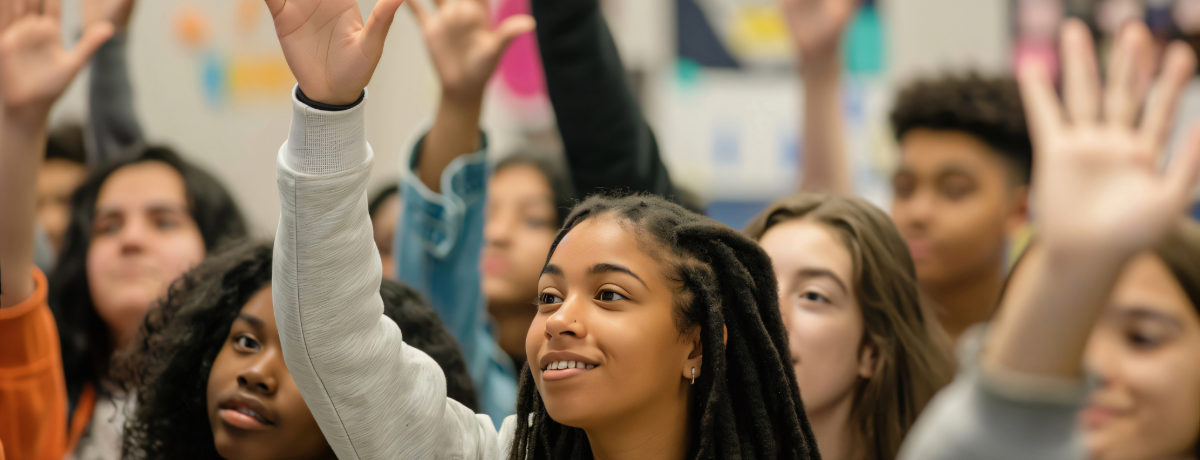
5 Ways Curiosity Makes Math Modeling Better
At its core, math modeling is a way of trying to make sense of something. Not in a textbook way, but in a real way. By looking at a problem, poking at it from a few angles, and asking, “Okay, what’s actually going on here?”
That kind of critical thinking usually starts with a question. Not just any question, though, the kind of question that gets stuck in your head:
- Why is this taking so long?
- Can we fix it?
- How can we improve it?
- What would happen if we tried something different?
That’s curiosity. And in math modeling, it’s not just helpful; it’s what makes the whole thing work.
Here’s what curiosity does behind the scenes.
1. It leads to better questions.
Sometimes, when a student reads a problem, their gut instinct is to immediately plug numbers into the first formula they remember. That could work, but it’s also just skimming the surface.
When a student is actually curious, they pause. They wonder, they ask follow-up questions, they especially ask “what if…” questions. They dig a little deeper. Instead of trying to “solve” it right away, they want to understand it from multiple perspectives. And that shift makes a big difference in how they approach the whole problem and in what they learn.
2. It helps when things get frustrating.
Okay, so math modeling can be hard. There’s usually some trial and error, a few wrong turns, and the occasional “wait, what even is this data?” moment. But when students are truly interested in the problem, they’re more likely to stick with it. Curiosity keeps them going when things aren’t clicking right away, especially when they might be in the middle of experiencing a productive struggle in math.
3. It makes students more willing to try new stuff.
Math modeling isn’t about finding the right answer. It’s about figuring out what makes the most sense based on what you know (and sometimes what you don’t know yet!). Some students may be a little out of their element handling the uncertainty at first. But if they're curious, they’re usually more willing to see if they can use problem-solving skills and figure things out.
You can see this happen when they start saying things like, “What if we tried it this way?” or “Let’s see what happens if we change this part.” Suddenly, they’re not afraid to make mistakes. They’re just genuinely interested in seeing where it leads. And that has a pay-off beyond the immediate problem.
4. It shows them how math relates to their everyday lives.
When students are curious and they really want to come up with a solution to a problem, they start to care about the actual outcome. And that changes everything. It’s not just a math assignment. It’s their question that they really want to figure out the answer to. It might be about traffic at their school during drop-off and pick-up or how to reduce waste in the cafeteria, but either way, it’s something that feels authentic and relevant.
5. It helps students learn how to think on their own.
Life generally doesn’t hand you a clean set of directions when you hit a road bump. Most challenges in life are messy, and sometimes with missing info, shifting variables, and with no obvious answer. That’s why math modeling is so powerful and important. It gives all students space to explore, test ideas, make mistakes, and try again.
Curiosity is what keeps that process going. It’s what turns “I don’t know” into “Let’s find out.” And over time, students start to build confidence in their ability to figure things out, even when the path forward isn’t clear. Sounds like much more than a math lesson!
At COMAP, we see this kind of curiosity play out all the time. Whether it’s through our math modeling contests or in the classroom with one of our modeling modules, students show up with questions, get stuck, rethink everything, and then keep going.
So curiosity doesn’t just get the wheels turning. It’s what makes the whole thing take off.
Written by
COMAP
The Consortium for Mathematics and Its Applications is an award-winning non-profit organization whose mission is to improve mathematics education for students of all ages. Since 1980, COMAP has worked with teachers, students, and business people to create learning environments where mathematics is used to investigate and model real issues in our world.
